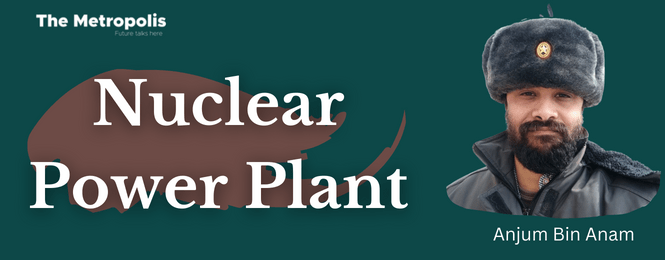Bangladesh has entered the elite club of nuclear-powered countries with the establishment of a 2,400-megawatt Rooppur Nuclear Power Plant (RNPP) on the banks of the Padma river in Rooppur, Pabna. As a clean energy source, it will not pollute our breathing air and will also not emit any greenhouse gases, thus contributing positively to climate change adaptation strategies.
A nuclear power plant is quite similar to any steam-powered power plant that utilizes steam to rotate the turbine and generate electricity. However, in a nuclear power plant, heat energy is generated from atomic radiation, which is then utilized for steam generation. Hence, it needs some major additional systems to complete the whole electricity generation cycle.
The primary fuel of a nuclear power plant is radioactive molecular materials, such as uranium. The molecule is the smallest chemical property retaining particle of an element, which has a central component, called the nucleus. This nucleus is made of electrons, protons, and neutrons. When the nucleus of a radioactive molecule is hit by a speedy external neutron, that nucleus breaks into two or more nuclei of different materials and some isolated speedy neutrons. These neutrons then hit and break the other nuclei and the process continues in a chain. That is why this reaction is named a chain reaction. To control the overactivity of a nuclear chain reaction, a moderator, absorber, and controlling materials are used. Without moderating the reaction speed, an explosion may occur.
Breaking a nucleus into multiple nuclei releases a massive amount of heat energy. This process is known as nuclear fission. The heat energy from this fission process is utilized to convert water into steam, which is used for rotating turbines. In a nuclear power plant, a nuclear chain reaction takes place in a reactor. During that process, the reactor gets very heated. To cool the reactor, a massive amount of coolant medium passes through the reactor. Thus, the coolant accepts heat from the reactor and this heated medium passes through a steam generator, which produces steam from water. After releasing the heat in the steam generator’s water, the coolants are cooled down to a level and then sent back to the reactor because it is a closed-loop process. A pressurizer system is added here to prevent the coolants from transforming into a gaseous form by regulating the system’s pressure.
Let us get back to the produced steam. It enters the steam turbine and rotates the shaft of the generator or alternator to produce electricity. After passing through the turbine, this steam loses heat and reaches the condenser part, where it is cooled to water again. To achieve this, the condenser is connected to a cooling tower, where cooling water consistently takes the heat away from the condenser. This warm water (after taking heat from the condenser) is then sent back to the cooling tower again for cooling down and reuse.

The nuclear power plant is very cost-effective and reliable, as seen in various developed and developing nations, such as the USA, Russia, the UK, France, Germany, South Korea, Japan, India, Pakistan, UAE, Iran, and so on. Regarding safety, it is just like any other conventional fossil fuel-based power plant and needs sufficient design-based protection. Usually, modern nuclear power plants have 5 phase protection systems. In addition, there are well-regulated standard operating procedures for each action in the plant to ensure reliability, safety, and cost-effectiveness.
There are two special features in a nuclear power plant that needs special safety features – first, the transportation and installment of the radioactive fuels; and second, the burnt radioactive waste removal. For these, internationally accepted and rule-governed procedures are adopted to stop radioactive material exposure to the environment through proper containment, transfer and waste management systems.
Plenty of international rules, regulations, and conventions are followed for the protection of the surrounding environment, including soil, air, water, flora, fauna, and so on. It is compulsory to develop greenery near the plant house. Also, the radiation level in the surrounding environment as well as living beings shall be determined from time to time to ensure safety.
Nuclear power may never be able to fully substitute fossil fuel, but it can be the most sustainable energy source in Bangladesh through its low-cost electricity production and de-carbonizing features. Hence, Rooppur Nuclear Power Plant is set to become a grand success in ensuring a secured electricity supply and sustaining our country’s economic development through its economically, technically, environmentally, and financially viable implementation.
Anjum Bin Anam is a mechanical engineer, working as Assistant Manager at Nuclear Power Plant Company Bangladesh Limited (NPCBL)




